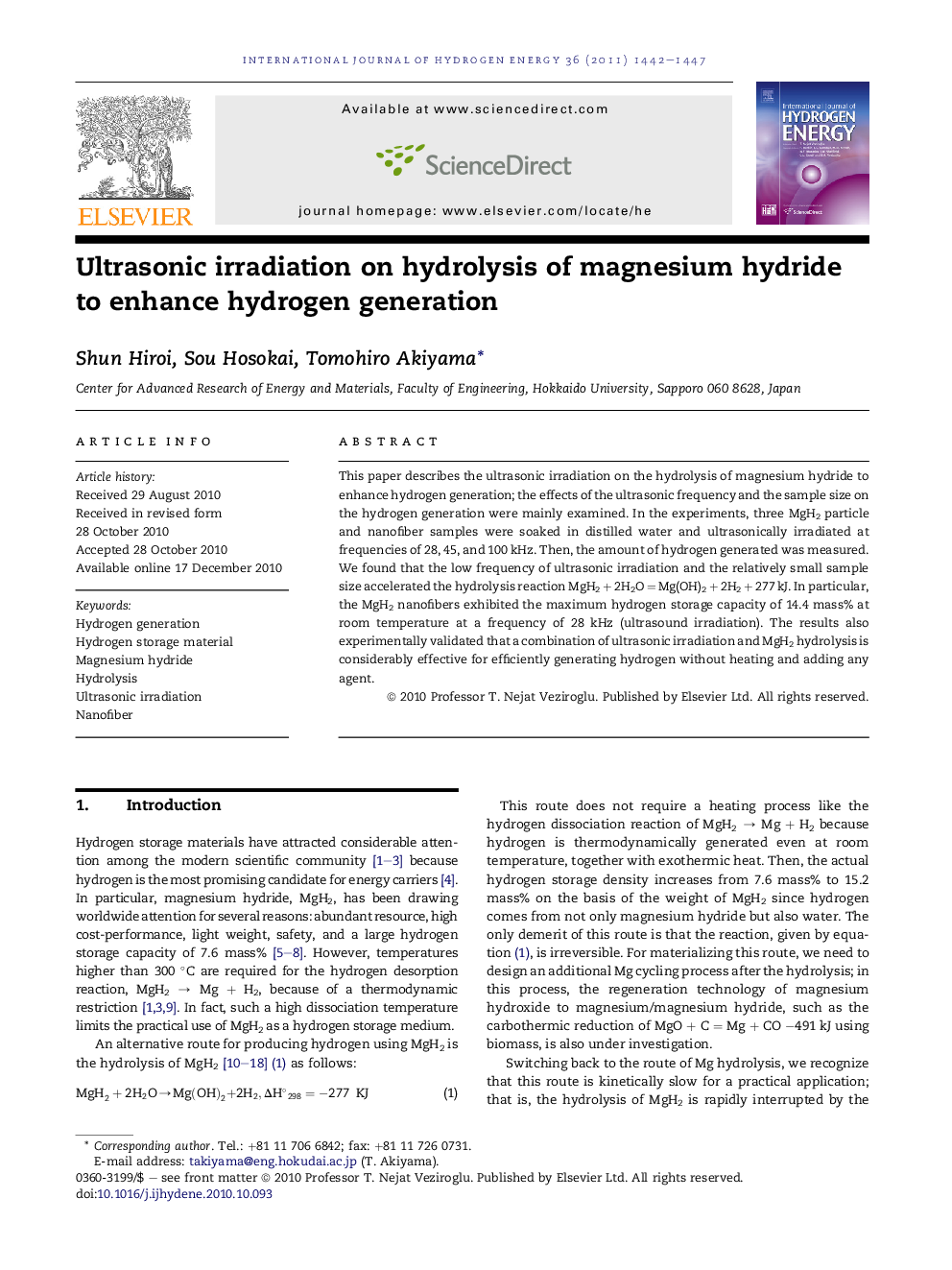| Article ID | Journal | Published Year | Pages | File Type |
|---|---|---|---|---|
| 1272310 | International Journal of Hydrogen Energy | 2011 | 6 Pages |
This paper describes the ultrasonic irradiation on the hydrolysis of magnesium hydride to enhance hydrogen generation; the effects of the ultrasonic frequency and the sample size on the hydrogen generation were mainly examined. In the experiments, three MgH2 particle and nanofiber samples were soaked in distilled water and ultrasonically irradiated at frequencies of 28, 45, and 100 kHz. Then, the amount of hydrogen generated was measured. We found that the low frequency of ultrasonic irradiation and the relatively small sample size accelerated the hydrolysis reaction MgH2 + 2H2O = Mg(OH)2 + 2H2 + 277 kJ. In particular, the MgH2 nanofibers exhibited the maximum hydrogen storage capacity of 14.4 mass% at room temperature at a frequency of 28 kHz (ultrasound irradiation). The results also experimentally validated that a combination of ultrasonic irradiation and MgH2 hydrolysis is considerably effective for efficiently generating hydrogen without heating and adding any agent.
